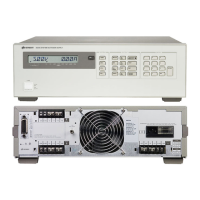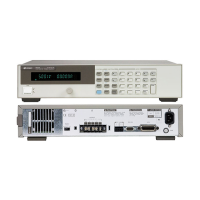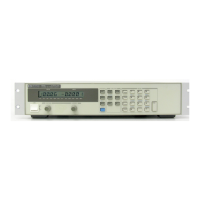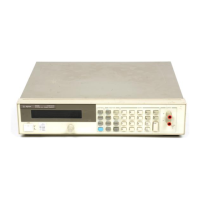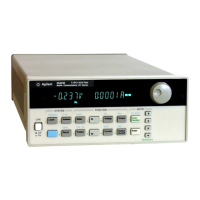Section IV
TROUBLESHOOTING
4-1 INTRODUCTION
This section provides troubleshooting and repair
information for the power supply. The troubleshooting
technique is to first isolate the problem to an assembly and
then follow the troubleshooting procedure provided for the
faulty assembly. The assembly (GPIB board or output
board) troubleshooting procedures will isolate the problem
to the defective component or circuit on the board.
Before attempting to troubleshoot the supply, ensure that
the fault is with the supply itself and not with an associated
circuit, load, or power line. The verification tests described
in Section III enable this to be determined without having to
remove the covers from the supply.
The most important aspect of troubleshooting is the
formulation of a logical approach to locating the source of
trouble. A good understanding of the principles of operation
is particularly helpful and it is recommended that Section II
of this manual as well as the Operating Manual (Agilent Part
No. 06626-90001) be reviewed before attempting to
troubleshoot the unit.
4-2 ELECTROSTATIC PROTECTION
This instrument uses components which can be
damaged by static charge. Most semiconductors
can suffer serious performance degradation as a
result of static charge, even though complete
failure may not occur. The following precautions
should be observed when handling static-sensitive
devices.
4-1
Most of the maintenance procedures given in this
section are performed with power applied and
protective covers removed. Such maintenance
should be performed only by service - trained
personnel who are aware of the hazards involved
(for example, fire and electrical shock)
If a component is found to be defective, replace it and
reconduct the performance tests given in Section III of this
manual. When the GPIB board or the EEPROM (U221) IC
on the GPIB board is replaced, each output present in the
supply must first be recalibrated as described in Appendix
A of the Operating Manual. If an Output board is replaced,
the associated output channel must be recalibrated. If a
component in the output circuits or readback circuits on an
output board is replaced, the output must be calibrated
before you can reconduct the performance tests.
Section V in this manual lists all of the replaceable parts for
the power supply.
a. Always turn power off before removing or
installing printed circuit boards or components.
b. Always store or transport static-sensitive devices
(all semiconductors and thin-film devices) in
conductive material. Attach warning labels to the
container or bag enclosing the device.
c. Handle static-sensitive devices only at static-free
work stations. These work stations should include
special conductive work surfaces (such as Agilent
Part No. 9300-0797) grounded through a one-
megohm resistor. Note that metal table tops and
highly conductive carbon-impregnated plastic
surfaces are too conductive; they can shunt charges
too quickly. The work surfaces should have
distributed resistance between 10
6
and 10
12
ohms
per square.
d. Ground all conductive equipment or devices that
may come in contact with static-sensitive devices or
assemblies.
e. Where direct grounding of objects in the work area
is impractical, a static neutralizer should be used
(ionizedair blower directed at work). Note that this
method is considerably less effective than direct
grounding and provides less protection for static-
sensitive devices.
f. While working with equipment on which no point
exceeds 500 volts, use a conductive wrist strap in
contact with skin. The wrist strap should be
connected to ground through a one-megohm
resistor. A wrist strap with insulated cord and
built-in resistor is recommended, such as 3M Co.
No. 1066 Agilent Part No. 9300-0969 (small wrist
size) and 9300-0970 (large).
Artisan Scientific - Quality Instrumentation ... Guaranteed | (888) 88-SOURCE | www.artisan-scientific.com
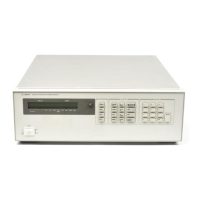
